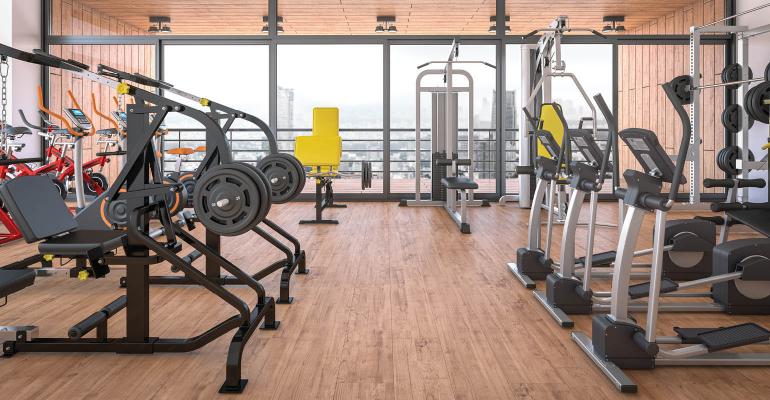The impact of wellness features on the revenue of a hotel is no longer limited for very high-end hotels or luxury resorts, according to industry sources.
“Hotels are using wellness to distinguish themselves from others and to remain competitive. With new hotel openings, the buying power has shifted to consumers, and therefore hotels are using wellness as a way to not only keep their existing guests, but to attract new guests as well,” says Jenna Finkelstein, senior consultant for CBRE’s Hotels’ consulting New York practice. “People do not want a disruption from their everyday routines, and this has now factored into the decision-making processes of guests.”
Wellness tourism, which focuses on travel with the purpose of improving physical and psychological well-being, is the fastest growing segment within the global tourism market. The Global Wellness Institute, a non-profit research and educational resource for the world wellness industry, expects wellness tourism to grow by 44 percent by 2022. In 2017, wellness tourism was worth an estimated $639 billion. What’s more, wellness travelers spend more per trip than the average tourist, according to a recent report from Avison Young, “The Future of Wellness in Hospitality.”
“Wellness is no longer a trend, it’s an imperative part of the design process. The majority of our current hospitality projects embrace wellness as an important amenity to the overall guest experience,” says Matt Page, vice president and associate principal at SB Architects, an architecture firm with experience in the hospitality sector. “Some of the newer brands, such as 1 Hotels, Six Senses, and Equinox have a strong emphasis on health and wellness and their underlying ethos has created its own loyal following.”
1 Hotels and Six Senses mix sustainability, health and wellness into all their properties, while the recently launched Equinox Hotel bridges high-end fitness within a luxury hotel experience. More traditional brands, like Hilton, look for ways to incorporate fitness directly into their guestrooms. For example, they introduced Five Feet to Fitness, an initiative that incorporates fitness equipment and guided workouts into specific guest rooms and suites, says Page.
Wellness improvements to hotel properties fall into either soft elements or hard elements category, according to the Avison Young report. Soft elements consist of investing in services such as yoga classes or healthy diet options, relatively cheap expenses for hotel owners. Hard elements, on the other hand, consist of more costly expenses such as constructing a new gym, spa facility or beauty clinic on-site.
For this reason, hotel developers eyeing the wellness trend are focusing more on the experiential, ‘soft’ side elements, rather than spending money on the ‘hard’ infrastructure of spa facilities. Still, consumer demand will be strong for both elements, according to Avison Young.
“Soft elements are more accessible and can be quick ways to make sure that your hotel is meeting the healthy requirements of guests. However, the hotels that truly embrace all elements of wellness are those that will be the most well-received,” says Finkelstein. “Hoteliers are utilizing under-performing space and turning that into an expanded fitness center with the latest technologies and equipment. A question of adding a spa to a hotel is much more complicated, as there are staffing and labor implications at the property. Rather than focusing on investment in creating a spa, hoteliers can offer spa-services in suite or in another private area of the hotel.”
Another trend developing in the hospitality sector involves embracing the “health of the community,” Finkelstein notes. That means partnering with local vendors to source their products, and to attract the local population, not only out-of-towners.
“Hotels rely on locals to visit their restaurant, spa, and other facilities at the hotel, so it is important the hotel is seen as a good neighbor.”
Meanwhile, Page also suggests partnering with a local gym, yoga or fitness studio to “create a unique offering without having to create their own ‘hard element.’ By doing this, hoteliers can play into the “theme of hyper-localization and the desire for travelers to feel like they are experiencing the local character and culture of the place.”
Over the next 10 years, wellness will become a central factor driving design, the operational ethos and balance of revenues at hotels, Avison Young forecasts. Failure to invest in wellness and sustainable design now could “cost more than you think,” according to the report. Over the next decade, there is likely to be a smaller investor pool for properties that do not meet these criteria as funds seek to increase their ‘green’ ratings.
“In a downturn, hotels must capture every revenue stream possible. Attracting additional customers not only means more rooms revenue, but now this guest may eat at the hotel's restaurant or get a spa treatment,” says Finkelstein. “This leads to higher overall revenue.”





